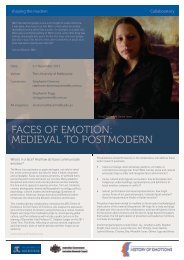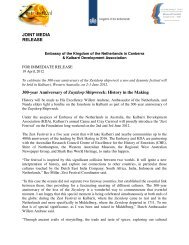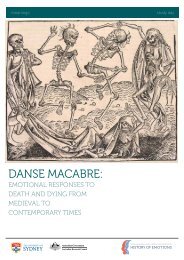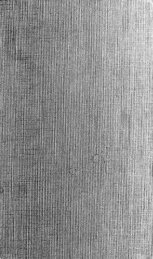Download our K-12 education pack - ARC Centre of Excellence for ...
Download our K-12 education pack - ARC Centre of Excellence for ...
Download our K-12 education pack - ARC Centre of Excellence for ...
You also want an ePaper? Increase the reach of your titles
YUMPU automatically turns print PDFs into web optimized ePapers that Google loves.
stories <strong>for</strong> teachers & students 2013<br />
Trees, stones, and plates:<br />
Messages across the oceans<br />
As Dias and his Portuguese counterparts moved down the coast<br />
<strong>of</strong> Africa heading south, they carefully marked their progress as<br />
they went. At key locations, they erected padrões, stone columns<br />
topped with a cross, in which they inscribed names and dates<br />
that would show those who followed them just how far they had<br />
travelled. Diogo Cão set up f<strong>our</strong> as he progressed down Africa’s<br />
west coast. As the Martellus Map <strong>of</strong> 1489 notes next to what is<br />
now Cabo Negro in Angola, ‘This mountain, called Monte Negro,<br />
was reached by the fleet <strong>of</strong> [John] the second, King <strong>of</strong> Portugal;<br />
the fleet was commanded by Diegus Canus, who, in memory <strong>of</strong><br />
this set up a marble column, with the emblem <strong>of</strong> the Cross’.<br />
Supporting Res<strong>our</strong>ces<br />
South Africa, Far from Home<br />
stories by winthrop pr<strong>of</strong>essor susan broomhall<br />
He was followed by Bartholomeu Dias who set up three more<br />
padrões, including at the furthest place he reached rounding<br />
Africa, at an area he marked on his map as Penedo das Fontes<br />
(‘rocks <strong>of</strong> springs’ in English) where freshwater springs can be<br />
found, and now known as Fountain Rocks. In 1500, another<br />
Portuguese fleet sheltered in Mossel Bay during a storm. One <strong>of</strong><br />
the captains, Pedro d’Ataide, wrote a letter in an old boot which he<br />
hung from a large milk wood tree near the spring. As a stopping<br />
point <strong>for</strong> freshwater, he hoped this would be found by other crews<br />
returning from India. D’Ataide was right. The next year, João da<br />
Nova discovered it. He left his own inscribed stone, which now sits<br />
in the South African Museum. A tradition had begun.<br />
From then, ships passed messages back and <strong>for</strong>th at this<br />
location as they passed by en route between Portugal and India.<br />
The ‘post tree’ remains today, and is now estimated to be over<br />
800 years old. Letters can still be posted in a special letterbox<br />
shaped as a seaman’s old boot which sits under the tree.<br />
When the Dutch followed into the area, they too used stones to<br />
inscribe with the details <strong>of</strong> their ship, company <strong>of</strong>ficials aboard,<br />
and the dates <strong>of</strong> their arrival and departure. These helped the VOC<br />
to keep track <strong>of</strong> when ships had passed, and to time their voyages<br />
to and from Batavia in what is now Indonesia. Thus, in 1635, <strong>for</strong><br />
example, the commander Wollebrant Geleinsen inscribed on a<br />
postal stone the following message <strong>for</strong> other ships, giving details<br />
<strong>of</strong> his voyage: ‘In the year 1635 on the 8 April the hon<strong>our</strong>able<br />
commander Wollebrant Geleinsen de Jong arrived on board the<br />
ship Amsterdam, departed April 15 <strong>for</strong> Batavia.’<br />
Does this sound familiar On the 25 October 1616 skipper Dirk<br />
Hartog <strong>of</strong> the VOC vessel Eendracht heading <strong>for</strong> Batavia spied an<br />
unfamiliar piece <strong>of</strong> coastline through his telescope. Quickly<br />
surveying the area, he called upon the cook to flatten a large<br />
pewter plate and be ready to engrave it with the message he<br />
dictated. This is what it read:<br />
A.D. 1616, on the 25th <strong>of</strong> October there arrived here the ship den<br />
Eendragt, <strong>of</strong> Amsterdam; supercargo Gillis Miebais, <strong>of</strong> Liege;<br />
skipper Dirck Hartog, <strong>of</strong> Amsterdam; she set sail again <strong>for</strong><br />
Bantam, on the 27th do.; subcargo Jan Steyn, upper-steersman<br />
Pieter Ledocker van Bil.<br />
This was nailed to a post on the northern edge <strong>of</strong> what is now<br />
Dirk Hartog Island, in Shark Bay. In the absence <strong>of</strong> ready stone,<br />
Hartog used what else he had at his disposal to leave a message<br />
behind <strong>for</strong> others on this ‘new’ land.<br />
IMAGE/ The earliest known Dutch Post <strong>of</strong>fice stone 1632. The inscription translated<br />
reads: “Hereunder lie letters from the commander Dirk van der Lee and<br />
vice-commander P Crook with the ships Nassau, Frederik Hendrik, Nimegen Wessel<br />
and the galliots”. Arrived here 9 April 1632 from Batavia and departed 15th ditto.<br />
C<strong>our</strong>tesy <strong>of</strong> Andrew Massyn.<br />
Other stones were used in a slightly different way, to mark the<br />
location <strong>of</strong> a <strong>pack</strong>et <strong>of</strong> letters lying nearby. Sailors knew which<br />
stones indicated where letters would be left to take on to Batavia<br />
or back to their homeland.<br />
It was because <strong>of</strong> this culture <strong>of</strong> ‘postal stones’ as signals that<br />
VOC vessels searching <strong>for</strong> survivors <strong>of</strong> shipwrecks on the West<br />
Australian coast paid such attention to possible signposts. When<br />
the Vergulde Draeck (Gilt Dragon) went missing en route from<br />
the Cape to Batavia in 1656, two VOC vessels were sent to search<br />
<strong>for</strong> her. In their exploration during early 1658, the crew <strong>of</strong> one<br />
found evidence <strong>of</strong> a wrecked Dutch vessel strewn up and down<br />
the coast. Indeed, Captain Volkersen recorded in detail<br />
something special: ‘a number <strong>of</strong> pieces <strong>of</strong> planking [that] had<br />
been put in a circle with their ends upwards’. This was to be<br />
further investigated by upper steersman Abraham Leeman who<br />
understood these to be a sign from the earlier Dutch crew left on<br />
the shore: ‘we pulled out the timbers and dug 4 to 5 feet deep<br />
into the ground, thrusting <strong>our</strong> cutlasses as deep as we could into<br />
the sand but found nothing.’ Clearly Leeman hoped to find letters<br />
or inscribed objects that would tell them about the survivors’<br />
shipwreck or perhaps which direction they had moved to. Hopes<br />
were dashed. Volkersen returned to Batavia none the wiser as to<br />
their fate.<br />
Postal stones must have been a welcome sight <strong>for</strong> crews after<br />
many months at sea. There were a sign <strong>of</strong> a familiar European<br />
language <strong>for</strong> those exploring what were <strong>for</strong> them strange and<br />
exotic lands and peoples around the Indian Ocean rim, they might<br />
explain the last movements <strong>of</strong> a vessel feared lost, and they<br />
<strong>of</strong>fered the promise <strong>of</strong> news from faraway loved ones at home.<br />
FAR FROM HOME: ADVENTURES, TREKS, EXILES & MIGRATION<br />
33












